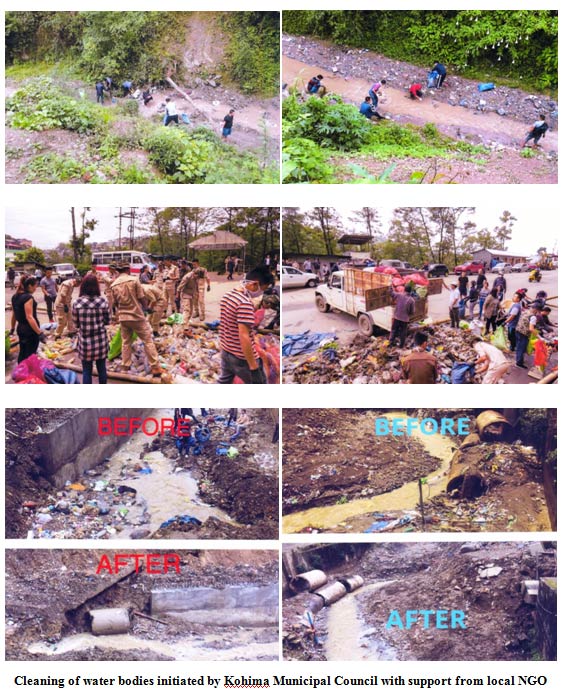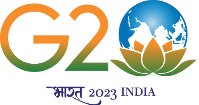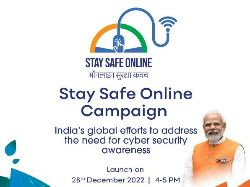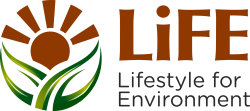Revised Action Plan for rejuvenation of polluted river stretches Priority III/IV/V
ACTION PLAN FOR REJUVENATION OF POLLUTED RIVER STRETCHES
PRIORITY III/IV/V IN NAGALAND
PREPARED BY:RIVER REJUVENATION COMMITTEE
ACTION PLAN FOR REJUVENATION OF POLLUTED RIVER STRETCHES PRIORITY III/IV/V IN NAGALAND
Introduction
- River Chathe Originates from areas near Medziphema / Chumukedima areas of Dimapur and flows into Dhansiri River Chathe is monitored at two points at mid stream below Medziphema and below Referral Hospital. Water analysis report shows that it falls under Priority IV. The main reason of pollution is due to inflow of domestic sewage from Medziphema and Chumukedima areas.
- Dzuna Stream (Priority III), Dzucha Stream (Priority V), Dzu stream (Priority IV) and Sano Ru Stream (Priority V) are small streams originates from Kohima district and flows through the capital city Kohima.
Biological Oxygen Demand (BOD) is one of the most common measures of pollutant organic material in water. BOD indicates the amount of permissible organic matter present in water. There are no major industries that discharge effluents in large quantity to cause such serious contamination. Therefore, the main source of pollution is due to domestic waste and municipal solid waste which is being dumped into the nullahs & river.
The details of the five identified rivers/streams are as follows:
| Name of the rivers/streams | Details | Identified polluted stretches | Priority wise |
| Chathe | It originates from areas near Medziphema and flows through Dimapur and connects River Dhansiri in Assam | Below Medziphema and Chumukedima | IV |
| Dzuna | Dzuna is a small river and a natural drain flowing in a west to east direction before meeting River Dzu | Below Kohima Municipal Council Dumping Site | III |
| Dzucha | Dzucha is also a small river which flows in a south eastern direction and joins River Dzu | Below Kohima Municipal Council Dumping Site | V |
| Dzu | Rivers Dzu is formed after the confluence of River Dzuna and Dzucha Ru River | Below Kohima Municipal Council Dumping Site | IV |
| Sano | It is a small stream located at Kohima | Below Kohima Town | V |
2. Objective of the Action Plan:
It is an important aspect for revival of these rivers and streams in context of its utility as it is perennial River. The ultimate goal for beneficial use of water bodies will determine the level of actions to be taken for maintaining the water quality. The requirement of river water quality for wild life and fish propagation also requires more stringent conditions and river water quality has to maintain adequate Dissolved Oxygen (DO) content so as to support survival of fish and other aquatic life.
3. The Basis of Proposed Action Plan for rejuvenation of polluted river stretches- River Chathe, Dzuna, Dzucha, Dzu & Sano Ru (Priority III/IV/V) in Nagaland.
- Analysis reports of Nagaland Pollution Control Board & Central Pollution Control Board.
- Hon’ble NGT order dated 03.08.2018 in the Matter of Paryavaran Samiti and Anr. V/s Union of India Ors. (OA. 593 of 2017, WP (C) 375 of 2012.
- Order of the Hon’ble NGT (PB) New Delhi, titled “More river stretches are now critically polluted”: CPCB (OA. 673/ 2018 in the matter of news item publish in the Hindu authored Shri. Jacob Koshy.
4. Components of Action Plan:
The proposed action plan covers following components:
Source control
Source control includes industrial pollution and disposal of domestic sewage as detailed below:
a. Industrial Pollution Control
- Inventorization of industries
- Treatment of effluents, compliance with standards and mode of disposal of effluents
b. Channelization, treatment, utilization and disposal of treated domestic sewage.
- Identification of towns and villages in the catchment of river/stream and estimation of quantity of sewage generation.
- Storm water drains now carrying sewage and sullage joining river/stream and interception and diversion of sewage to STPs
- Treatment and disposal of septage and controlling open defecation.
- Identification of towns and villages for installing sewerage system and sewage treatment plants.
c. Flood Plain Zone.
- Regulating activities in river/drains banks to avoid clogging.
- Management of Municipal, Plastic, Hazardous, Bio-medical and Electronic wastes.
- Afforestation in the catchment areas along the riverside and aesthetic plantation programs.
- Improve irrigation practices.
d. Ecological/Environmental Flow (E-Flow).
- Issues relating to E-Flow.
- Irrigation practices.
5. Treatment of sewage:
- Department of Water Resources would undertake measurement of flow of the drains formulate Detailed Project Report (DPR) for each drain and corresponding town.
- The flow in each drain should exclude monsoon flow. Further, any drain if receiving fresh water from any escape channel etc, should be examined for its diversion rather than mixing with sewage.
- Sewage treatment plants for each town and related drains should be properly designed with the interception and diversion plan.
- Sewage treatment plant (STP) and its design should be based on its full utilization capacity and ensuring simultaneous house connections to sewers as applicable to each drain and town.
- Sewage treatment plan should also consider treatment and disposal of sewage from Villages including discharges from toilets constructed under Swachh Bharat Abhiyan.
- Hotels/Restaurants particularly located on road-side should not dispose untreated sewage and solid waste into nearby public drain or rivers. Such establishments should be properly regulated and levied with fines in case of any violation.
6. Flood Plan Zone (FPZ)
Department of Water Resources should identify /demarcate Flood Plain Zone and regulate the activities. Such regulations would also cover
- Plantation in Flood Plain Zone (FPZ) –By Department of Environment, Forests & Climate Change.
- Checking encroachments-By District/Local administration.
- Prohibition of disposal of municipal and bio-medical waste particularly in drains-By District administration/Dimapur Municipal Council.
- Department of Water Resources, Government of Nagaland may notify FPZ – within one year.
7. Monitoring of Action Plan
In compliance with the order passed on OA No. 673/2018 dated 20.09.2018 by the Hon’ble National Green Tribunal (NGT) Principal Bench, New Delhi, “River Rejuvenation Committee” was constituted by the Governor of Nagaland, vide Notification No. FOR/NPCB-27/6/18, dated 2nd November, 2018. The Committee shall function under the supervision and coordination of Principal Secretary, Environment, Forests and Climate Change. Action Plan for River Rejuvenation of polluted river stretches shall be prepared and monitored by the Committee.
River Rejuvenation Committee:-
- Director, Urban Development Department – Member
- Director, Industries & Commerce – Member
- Chief Engineer, Public Health Engineering Department – Member
- APCCF, (Environment, Forests & Climate Change – Member
- Member Secretary, Nagaland Pollution Control Board – Member Secretary
8. Action Plan- Short Term and Long Term Action and the Identified Authorities for initiating actions and the time limits for ensuring compliance.
Short term and long term action plans and the implementing agencies responsible for execution of the action plans and the time limits are given in the table below.
| Sl. No | Action plan for rejuvenation of Polluted River Stretches | Agency Responsible for Execution of the Action plan | Time Target | Budget (in rupees) | Remarks |
| I | Industrial Pollution Control | ||||
| a | Comprehensive inventorisation of industries in the catchment area of the water bodies. Assessment on status of consent under Water & Air Acts. | Nagaland Pollution Control Board | Completed | – | – |
| b | Small scale service providing units located at urban or semi-urban area like Auto Service Stations etc. should not be allowed to dispose wastewater effluent or sludges into drains or sewers. | Kohima Municipal Council and Nagaland Pollution Control Board | 31st Dec, 2019. | – | NPCB has notified on local dailies not to dispose/ discharge spent oil/waste oil into drains. KMC to submit Action Taken Report to NPCB. |
| c | No industry should discharge effluent directly into drains without treatment. They have to set up ETP for operation of units. | Kohima Municipal Council (KMC), Dept. of Industries & Commerce and Nagaland Pollution Control Board (NPCB) | 31st Dec, 2019 | – | KMC, Dept. of Industries & Commerce and NPCB will jointly inspect and direct such units for compliance. |
| II | Solid waste Management | ||||
| a | Solid Waste Management quantification, characterization processing facilities
(As per Municipal Solid Wastes Rules, 2016) |
Kohima Municipal Council | Completed | – | Solid Waste Management facility at Lerie, Kohima has been funded by Asian Development Bank. The facility was inaugurated and commissioned in 11th February 2016. |
| b | Construction of crematorium | Kohima Municipal Council | 31st Dec, 2020 | 130 lakhs | Will Seek financial assistance from CPCB under Environmental Compensation |
| c | Awareness & social action/ public participation for cleaning work in 19 Wards in Kohima | Kohima Municipal Council | 31st Dec, 2020 | 30 lakhs | Will Seek financial assistance from CPCB under Environmental Compensation |
| d | Construction of public toilets (2 seater) with water supply facility 50 nos | Kohima Municipal Council | 31st December 2020 | 150 lakhs | Will Seek financial assistance from CPCB under Environmental Compensation |
| III | Sewage Treatment and Disposal Plan | ||||
| a | Construction of Community toilets | Kohima Municipal Council | 31st December 2020 | – | 44 community toilets/public toilets had been sanctioned under Swachh Bharat Mission |
| b | Construction of Septage Management at Kohima 90,000 litres/day | Kohima Municipal Council | Ongoing
31st December 2019 |
23 Crores | Septage Management facility at Kohima has been funded by Asian Development Bank. The project is in the final stage and is likely to be commissioned by December 2019. |
| c | Estimation of total sewage generation, existing treatment capacities, quantum of disposal of sewage presently through drains and the gaps in sewage treatment capacity | Urban Development Department
(AMRUT) |
31st March 2020 | – | – |
| d | To undertake measurement of flow of all the drains presently contributing pollution load in river and to formulate detailed project report (DPR) for each drain and corresponding town and submission of DPR to concern departments | Urban Development Department | 31st March 2020 | – | – |
| e | Proper design, execution of STPs with full utilisation capacity | Urban Development Department | 31st March 2020 | – | – |
| f | Channelization including diversion of sewage generated from household/ town ships/ villages to sewer lines /interception of all the drains presently carrying sewage and for ensuring proper treatment through the upcoming STPs | Urban Development Department | 31st March 2020 | – | – |
| e | Ensuring automobile service stations and Hotels/ Restaurants particularly located on road-side should have a treatment system and levy of fine in case found violations | Kohima Municipal Council & NPCB | 31st December 2019 | – | – |
| III | Flood Plain Zone (FPZ) | ||||
| a | Plantation in Flood Plain Zone (FPZ) | Department Environment, Forests & Climate Change | On-going 31st October 2019 | – | – |
| b | Checking encroachments in the FPZ of rivers | District administration | On-going
31st August 2019 |
– | – |
| c | Prohibition of disposal of municipal plastic and biomedical waste particularly in drains | Kohima Municipal Council/ Dimapur Municipal Council/ NPCB | Completed | – | Notified in the local papers and implemented |
| IV | Environmental Flow (E-Flow) and Irrigation Practices | ||||
| a | Rain water harvesting and ground water recharge | PHED and Environment, Forests & Climate Change | Ongoing
(continuous project) |
– | Rain water harvesting is done by both PHED and Department of Environment, Forests & Climate Change under Jal Shakti, etc. |
| b | Plantation on both side of the river | Department of Environment, Forests & Climate Change | Ongoing | – | – |
| c | Measurement of minimum environment flow of rivers | Water Resources Department | Done Regularly | – | Measurement of minimum environment flow of rivers is done by Water Resources Department on regular basis. |
| d | To conserve water and good irrigation practices to be adopted by the farmers by organising mass awareness programmes and through media in vernacular language | Water Resources Department | Done Regularly | – | The Water Resources Department has been organizing various mass awareness programmes for conservation of water and good irrigation practices |
| GRAND TOTAL AMOUNT | 310 lakhs | ||||
N.B: Kohima city has been selected as one of the Smart Cities and infrastructural development activities are in progress.
Member Secretary
River Rejuvenation Committee
PHOTO SECTIONS







